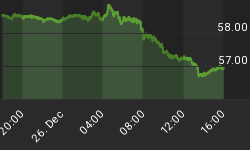The shale revolution's sweet spot is oilfield services, the lower-risk backbone of the American oil and gas boom that pays off regardless of a play's economics.
Behind the stardom of the explorers and producers who have put themselves on the revolutionary shale map and absorb most of the risk--are the service providers who make up a highly lucrative market segment.
The US land-based rig count rose 3% over the last quarter, reaching a two-year high of 1,870 active rigs. A major factor in this growth has been an uptick in horizontal drilling in the Permian Basin, Texas' revived giant, where the rig count was up 21% year-on-year.
And while oil prices slumped in October, drilling activity continues to rise, according to Baker Hughes, the third-largest oil services company. Baker Hughes' rig count is up 3.8% in the fourth quarter of this year, compared to the third quarter.
RBC Capital Markets estimates that 20,061 horizontal wells will be drilled in the United States alone this year, with that number increasing by well over 1,000 in 2015. Overall, analysts are projecting a 5% increase in the US land rig count next year, with horizontal drilling rigs--already up 24% over last year--being the real movers here.
Oil prices are "no longer the only driver of that bus because continued efficiencies from pad drilling, hydraulic fracturing and increased stages per well continue to increase recoveries and lower costs per unit of oil and gas produced", Natural Gas Intel quoted analysts as saying.
All the drilling poises the oil and gas services industry for big gains. For potential investors, it's a good time, too, because the past couple of weeks have seen oil services oversold after West Texas Intermediate and Brent crude prices took a dive coming off their summer highs.
The Q3 conference calls from industry giants Baker Hughes Inc. and Schlumberger Ltd. were very positive--they see no changes in overall spending outlook from their customers.
Baker Hughes' third-quarter profit rose 10% on higher revenue across all segments.
And even though oil services giants such as Halliburton are low risk and aren't experiencing any downturn whatsoever as a result of the oil price slump, their stocks have been crushed.
Small cap services stocks have fared even worse. But business continues to boom for these operators as well.
Dave Werklund is Chairman of Calgary-based Aveda Transportation and Energy Services --whose stock has gone from $5.85-$4 in the last two months, despite no downturn in business.
At over $100 million revenue, Aveda is the largest pure-play drill rig mover in the United States. Today its footprint covers over 80% of the rig-moving market, from Alberta all the way down to Texas.
"With over 2,000 active rigs operating across North America today, and an average rig being moved approximately 17 times per year, the rig-moving industry is set for phenomenal gains," Dave Werklund, Executive Chairman of Calgary-based Aveda Transportation and Energy Services told Oilprice.com.
This little known segment is actually a $2-billion niche in the services sector.
Once horizontal wells are drilled from a pad, the fully constructed rig has to be dismantled, moved to the next location using hydraulic walking or skidding systems, and then put back together.
Producers are demanding this work be done faster and safer than ever before. It's a service that continues to be in high demand.
The advent of pad drilling, which allows the drilling of multiple wells from a single pad, is also transforming the services industry from equipment design and leasing to the task of moving the larger loads from pad to pad.
"With the conversion to pad drilling in the US, the size and weight of the rigs have increased exponentially," says Werklund. That was a lucky break for Aveda, as they already had much bigger trucks in their fleet because of the bigger rigs their original Canadian customers used. As soon as they came down to the US, producers began using their services.
The general consensus is that American producers will not stop drilling even with an oil price of $80 per barrel. Instead, they're digging in.
The lesson for investors? While energy service stocks have seen a crushing six weeks--in tandem with oil prices--activity levels have not slowed.
Source: http://oilprice.com/Energy/Energy-General/The-Driving-Force-Behind-the-US-Oil-Boom.html
By. James Stafford of Oilprice.com
















